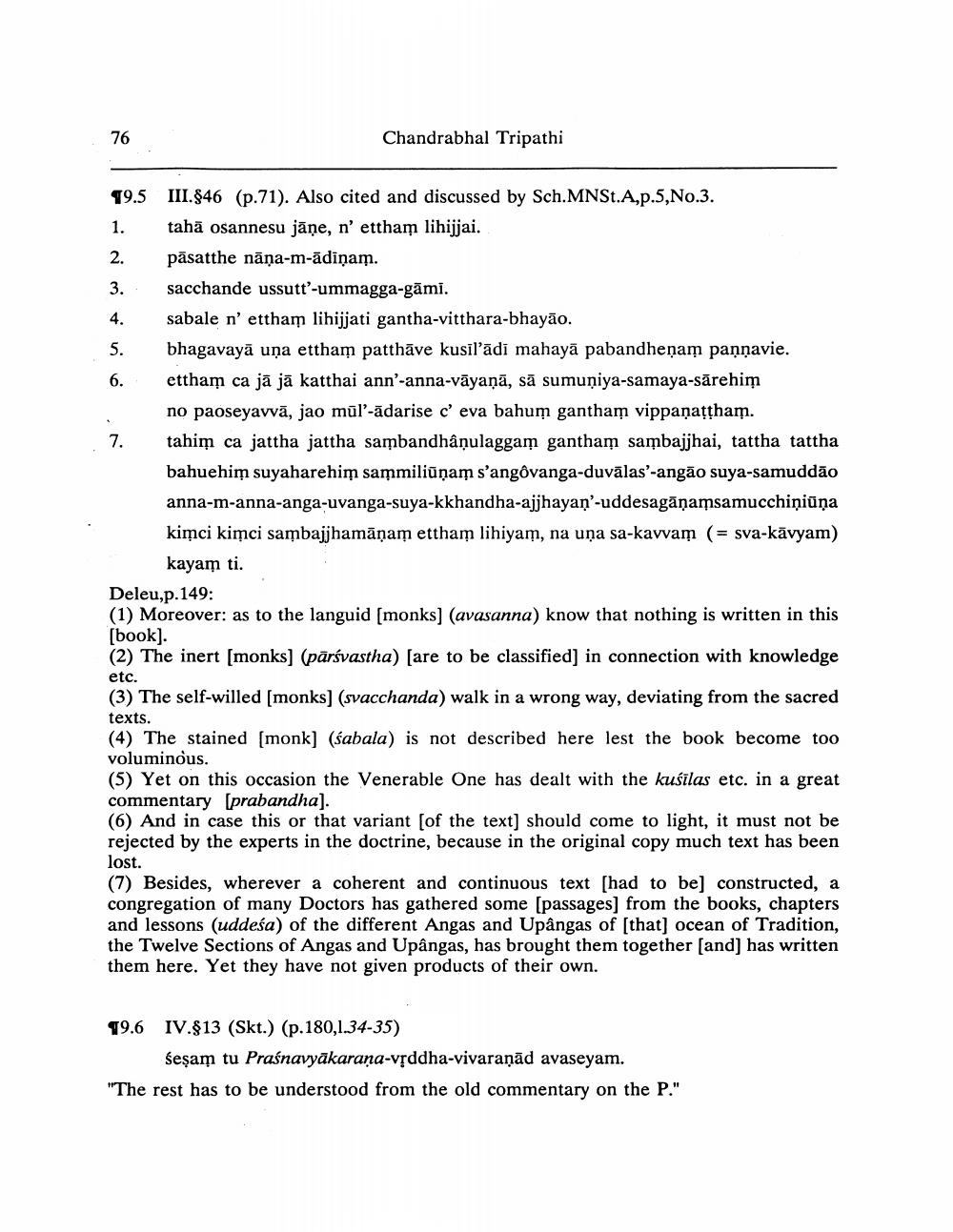________________
76
"
19.5 III.$46 (p.71). Also cited and discussed by Sch.MNSt.A,p.5,No.3.
1.
tahā osannesu jāņe, n' ettham lihijjai.
2.
păsatthe nǎna-m-ādiņam.
3.
sacchande ussutt'-ummagga-gāmi.
4.
sabale n' ettham lihijjati gantha-vitthara-bhayão.
5.
6.
bhagavaya una ettham patthäve kusil'ādi mahayā pabandheņam pannavie. ettham ca ja ja katthai ann'-anna-vāyaṇā, sā sumuniya-samaya-särehim no paoseyavvä, jao mal'-adarise c' eva bahum gantham vippanattham. tahim ca jattha jattha sambandhanulaggam gantham sambajjhai, tattha tattha bahuchim suyaharchim sammilionam s'angovanga-duvalas"-angão suya-samuddão
Chandrabhal Tripathi
7.
anna-m-anna-anga-uvanga-suya-kkhandha-ajjhayan'-uddesaganamsamucchiniūna kimci kimci sambajjhamāņam ettham lihiyam, na una sa-kavvam (= sva-kavyam) kayam ti.
Deleu,p.149:
(1) Moreover: as to the languid [monks] (avasanna) know that nothing is written in this [book].
(2) The inert [monks] (parśvastha) [are to be classified] in connection with knowledge
etc.
(3) The self-willed [monks] (svacchanda) walk in a wrong way, deviating from the sacred
texts.
(4) The stained [monk] (sabala) is not described here lest the book become too voluminous.
(5) Yet on this occasion the Venerable One has dealt with the kuśīlas etc. in a great commentary [prabandha].
(6) And in case this or that variant [of the text] should come to light, it must not be rejected by the experts in the doctrine, because in the original copy much text has been lost.
(7) Besides, wherever a coherent and continuous text [had to be] constructed, a congregation of many Doctors has gathered some [passages] from the books, chapters and lessons (uddeśa) of the different Angas and Upângas of [that] ocean of Tradition, the Twelve Sections of Angas and Upângas, has brought them together [and] has written them here. Yet they have not given products of their own.
19.6 IV.§13 (Skt.) (p.180,1.34-35)
Sesam tu Pranavyäkaraṇa-vṛddha-vivaraṇād avaseyam.
"The rest has to be understood from the old commentary on the P."




